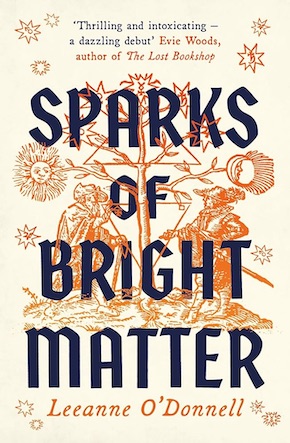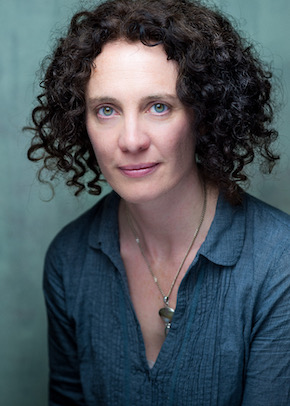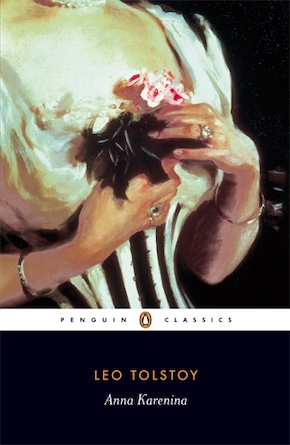And they lived happily ever after…?
by Leeanne O'Donnell
Few of us can resist the appeal of a happy ending – especially if it involves two great characters heading off into the sunset together and living happily ever after. As a writer what could be more satisfying after years of toil than capping your fountain pen knowing that everyone is coupled up and all they have to worry about now is the occasional argument about the washing up?
But what if your characters won’t play ball? What if your characters are unconventional, elusive and unpredictable? What if their lives are messy, what if their desires are messy?
I spent eight years with the characters in my debut novel Sparks of Bright Matter, and in the end being true to their inconvenient, passionate personalities felt more important than tying everything up with a bow.
Living in 18th-century London and Ireland, my characters have complex and dangerous lives. Sparks of Bright Matter is all about alchemy and searching for the transcendent, the characters have to navigate the grimy underworld of Georgian London but bright sparks of lust and love dazzle them at pivotal moments.
My protagonist and anti-hero Peter Woulfe is an 18th-century scientist and secret alchemist. Falling head over heels in love with a sex worker, Sukie, derails his life. Sukie meanwhile becomes entangled with a married woman and her husband, moves in with them and dramatically alters their lives by bringing the dangerous element of desire into their quiet, stable home life.
A satisfying love story takes us from the first glance across a room, through challenges and triumphs, and then on to the resolution of a shared life together. This is the conventional script on offer. But if we throw out that script, can we imagine new ways to good endings?
With the characters in Sparks of Bright Matter I knew I needed to see if I could bring them the long way around to endings that felt real, and right for them – endings that would offer them a chance of happiness beyond the usual romantic tropes.
The plot lines didn’t lend themselves to easy romantic resolutions. Richard Gere and Julia Roberts in Pretty Woman aside, you don’t need me to tell you that a young medical student in love with a sex worker in 18th-century London is unlikely to walk her up the aisle surrounded by approving friends and family. Or that the odds are not stacked in favour of a married woman during the same period who loves her husband but falls passionately in love with another woman.
Can the women who have the ‘wrong’ sorts of desires pulling them into the ‘wrong’ sort of relationships find happiness outside the script? What might that even look like?”
Throughout the history of literature writers have tried to work out how to write about doomed love. Tolstoy’s Anna Karenina is one of my favourite takes on the theme. The very beautiful Anna is married to a high-ranking government official with one adored little son, when she meets young, handsome, charismatic Vronsky. Guess what happens? Anna and her husband are not going to get a happy ending and it’s not too much of a spoiler to hint that neither are Anna and Vronsky. This is a great Russian novel after all.
There is a happy ending in there though, alongside Anna’s story Tolstoy follows Levin and his beloved Kitty through years of twists and turns. There is so much intense literary love in the ether that Kitty becomes ill and has to go away to a health spa to regain her strength. This love stuff is not for the fainthearted. But Kitty survives her brush with thwarted, dangerous love and finds sanctuary with her soul mate. The grim underlying moral of the story is that some women get happy endings, but generally not the women who have affairs with handsome cavalry officers.
Freed from the shackles of 19th-century morality that Tolstoy was writing within, can we do any better? Can the women who have the ‘wrong’ sorts of desires pulling them into the ‘wrong’ sort of relationships find happiness outside the script? What might that even look like? Anna Karenina living happily with Vronksy forever, or Anna going back to her husband despite realising (true story!) that he has unusually big ears? Much more radically, could Anna find a way to be happy without either partner?
And what if the great narrative arc of romantic and sexual love, the quest to find the one, is not actually the great love story of a character’s life? In Sparks of Bright Matter Sukie sells sex and has an intensely passionate love affair – she knows all about desire. But she is deeply unconventional, elusive and unique. Would she want the classic romantic resolution even if she could have it? She made me wonder about the other great loves in life – the ones that get put into second, third and fourth place by our standard scripts –friendship, non-sexual love, found family and personal freedom.
Michael Cunningham took a queer lens to this question in one of his early novels A Home at the End of the World. Bobby, Jonathan and Clare love each other with a complicated mixture of deep friendship, lust and romantic love. Can they invent a radical new shape to hold the feelings between them? One that doesn’t relegate the non-sexual relationships to second or third best?
In his magnificent later novel The Hours, Cunningham explores the same question – putting gender and sexuality aside he makes the relationship between lesbian Clarissa and her gay friend Richard the central thread in the book. Most of the emotional heat, most of the attention, is on this enduring loving friendship. Sexual partners for about five minutes when they were twenty, their deep love, their focus on each other is more charged than any of their conventional romantic loves. And it has lasted for decades, through thick and thin.
Maybe, in the end, that’s the most romantic thing of all?
—

Leeanne O’Donnell was born in Dublin and now lives in an old farmhouse on the foothills of a mountain in West Cork with her wife and daughters. She started her storytelling career working in radio with RTE and BBC, and has made a number of award-winning documentaries for RTE’s Doc on One series. She produces and presents a podcast about the ancient stories of Irish mythology and is also a trained psychotherapist. Sparks of Bright Matter, her debut novel, is published by Eriu, the Dublin-based division of Bonnier Books, in hardback, eBook and audio download.
Read more and buy at bookshop.org
Instagram: donnellleeanneo
@eriu_books
@bonnierbooks_UK


